Dishwashing is an everyday activity that consumes significant resources in our homes. The average household uses up to 27 gallons of water per dishwasher load, while hand-washing can use even more if done inefficiently. Beyond water consumption, conventional dishwashing detergents often contain chemicals that can harm aquatic ecosystems. The good news is that with some mindful adjustments to our dishwashing routines, we can substantially reduce our environmental footprint.
This article explores practical, effective strategies to make your dishwashing routine more eco-friendly, conserving both water and detergent while still achieving sparkling clean results.
Pre-Scraping Instead of Pre-Rinsing
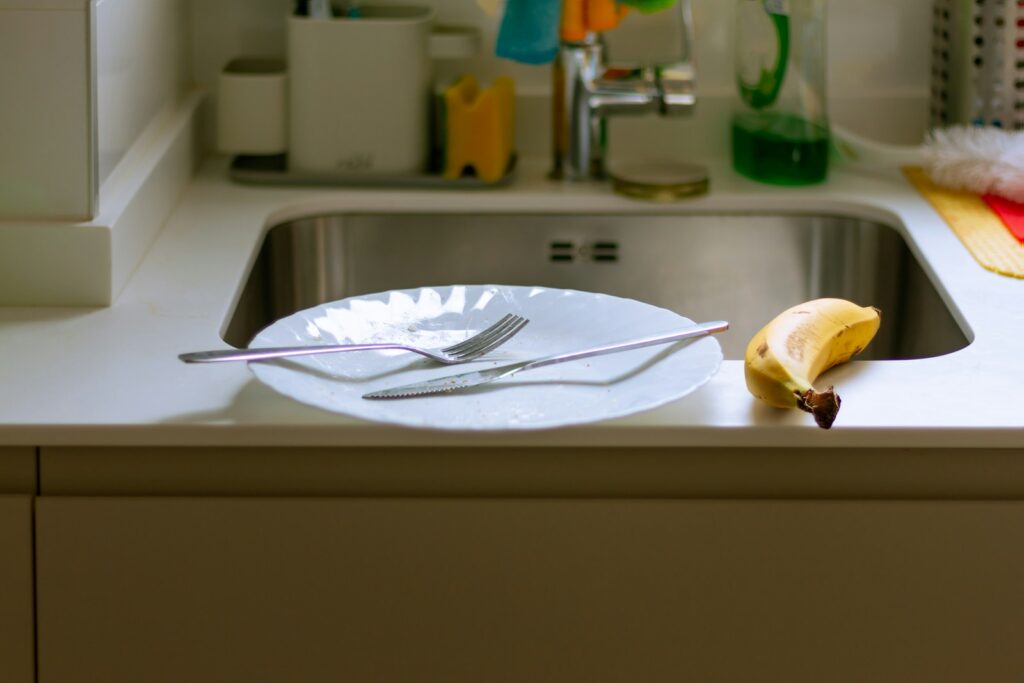
One of the most common water-wasting habits is pre-rinsing dishes before loading them in the dishwasher. Modern dishwashers are designed to handle food particles, making pre-rinsing unnecessary in most cases. Instead, simply scrape excess food into your compost bin or trash using a rubber spatula or designated scraper tool. This simple switch can save up to 6,000 gallons of water per household annually.
For particularly stubborn residue, consider keeping a small bowl of water nearby to dip your scraper in rather than running the tap continuously. Remember that dishwashers actually work better when they have some food particles to detect, as many models adjust their cleaning intensity based on how dirty the load is.
Strategic Loading Techniques

How you load your dishwasher significantly impacts both water and energy efficiency. Always run full loads but avoid overcrowding, which prevents water from reaching all surfaces effectively. Position items with the dirty surfaces facing the center and downward to maximize exposure to spray arms. Place cups, glasses, and bowls at an angle so water can drain rather than collect. Keep utensils separated rather than nested together to ensure all surfaces get cleaned.
For hand washing, gather all items before starting and arrange them logically—glasses first, then less greasy items, saving the dirtiest pots and pans for last to maximize your soap’s effectiveness throughout the process.
The Two-Basin Method for Hand Washing
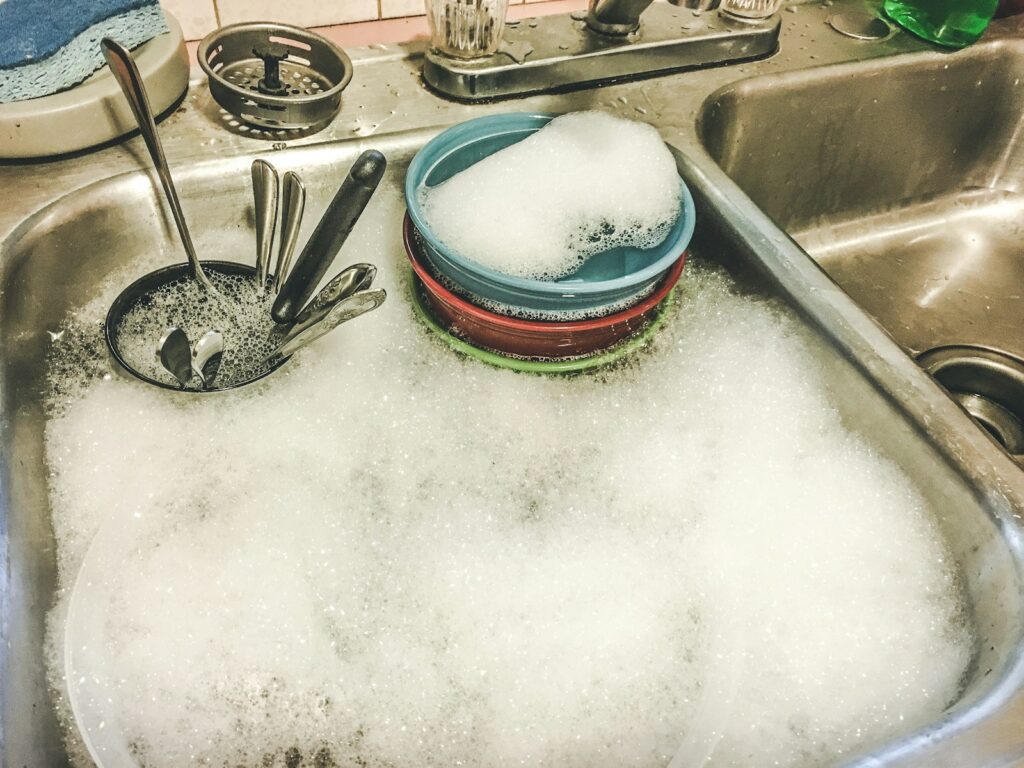
When hand washing dishes, the running tap method wastes enormous amounts of water—up to 2 gallons per minute. Instead, implement the two-basin approach: fill one basin with hot, soapy water for washing and the other with clean water for rinsing. This method can reduce water usage by up to 50% compared to washing under a running tap. For those without double sinks, inexpensive dishpans placed inside your sink serve the same purpose. Change the water when it becomes too grimy or cool, but resist the urge to refresh it too frequently. This system is particularly effective because it allows soap to remain concentrated where needed while keeping rinse water clean.
DIY Eco-Friendly Dish Soaps
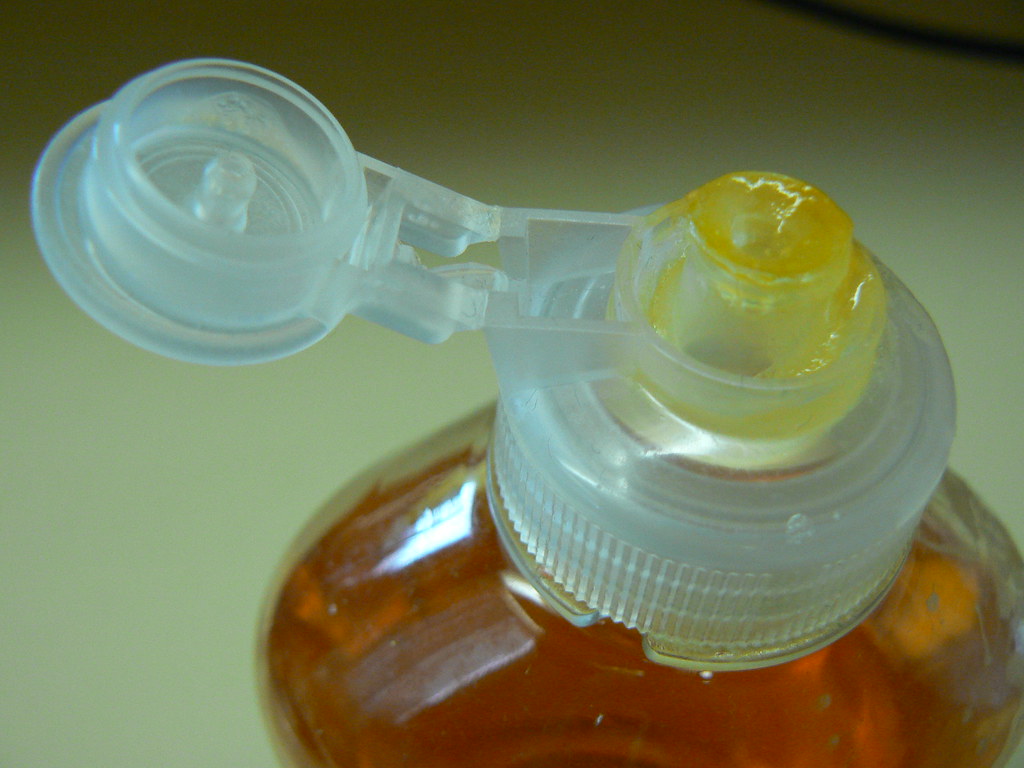
Commercial dishwashing detergents often contain phosphates, chlorine, and artificial fragrances that can harm aquatic environments. Creating your own dish soap allows you to control exactly what goes down your drain while often saving money. A simple effective recipe combines 1 cup of liquid castile soap, 1/4 cup of white vinegar, 1 tablespoon of baking soda, and 10 drops of essential oil (lemon or tea tree work well for their antibacterial properties).
For dishwasher detergent, mix equal parts baking soda and washing soda with 1/4 part citric acid and a few drops of essential oil. These homemade alternatives typically cost 70-80% less than commercial products while eliminating plastic packaging waste and harmful chemicals from your routine.
Concentrated Soap Applications
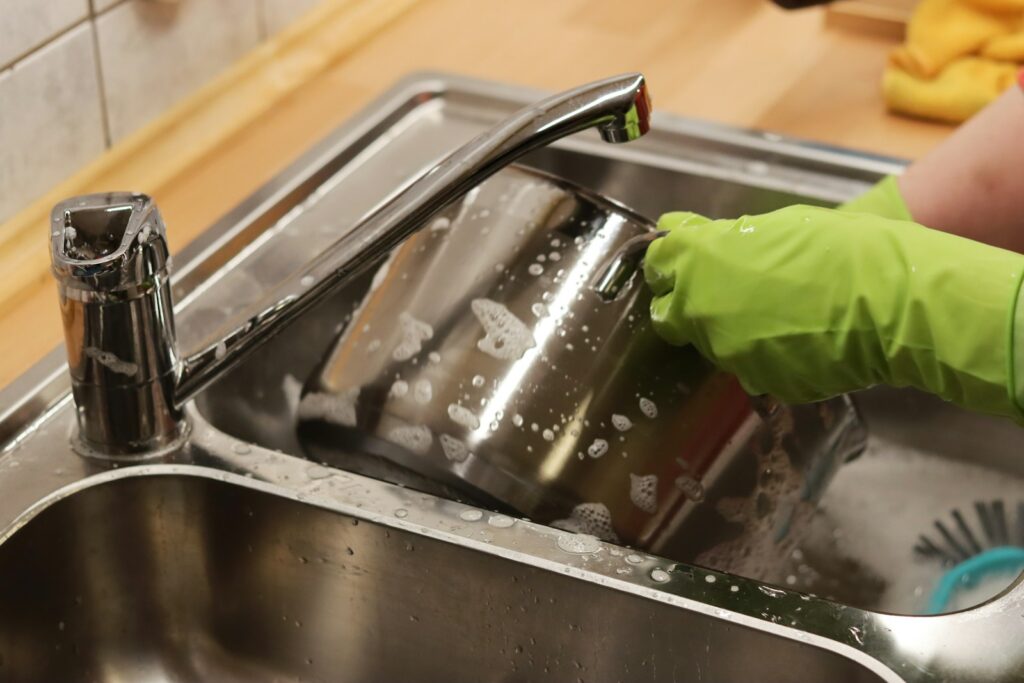
Most people use far more dish soap than necessary, which not only wastes product but also requires more water for rinsing. Instead of squirting soap directly onto dishes or into running water, apply a small amount to a damp sponge or brush first. For especially greasy items, apply soap directly to the grease spot rather than using more soap throughout. Consider using a foaming soap dispenser which creates more surface area with less product—simply dilute regular dish soap with water at a 1:4 ratio.
Another effective technique is to place a tablespoon of dish soap in a spray bottle filled with water and spray dishes lightly instead of using liquid soap directly, which can reduce soap usage by up to 75% while still providing effective cleaning power.
Water-Saving Faucet Attachments

Installing a faucet aerator is one of the most cost-effective ways to reduce water consumption during dishwashing. These inexpensive devices mix air with water to maintain pressure while reducing flow, typically from 2.2 gallons per minute to 1.5 gallons or less. Faucet aerators cost between $2-$10 and can be installed in minutes without special tools.
For more precise control, consider a pause button attachment that allows you to temporarily stop water flow without adjusting temperature settings. Some newer models feature adjustable spray patterns, allowing you to switch between a concentrated stream for stubborn food and a wider spray for rinsing. These simple devices typically pay for themselves in water savings within the first month of use.
Optimizing Dishwasher Efficiency
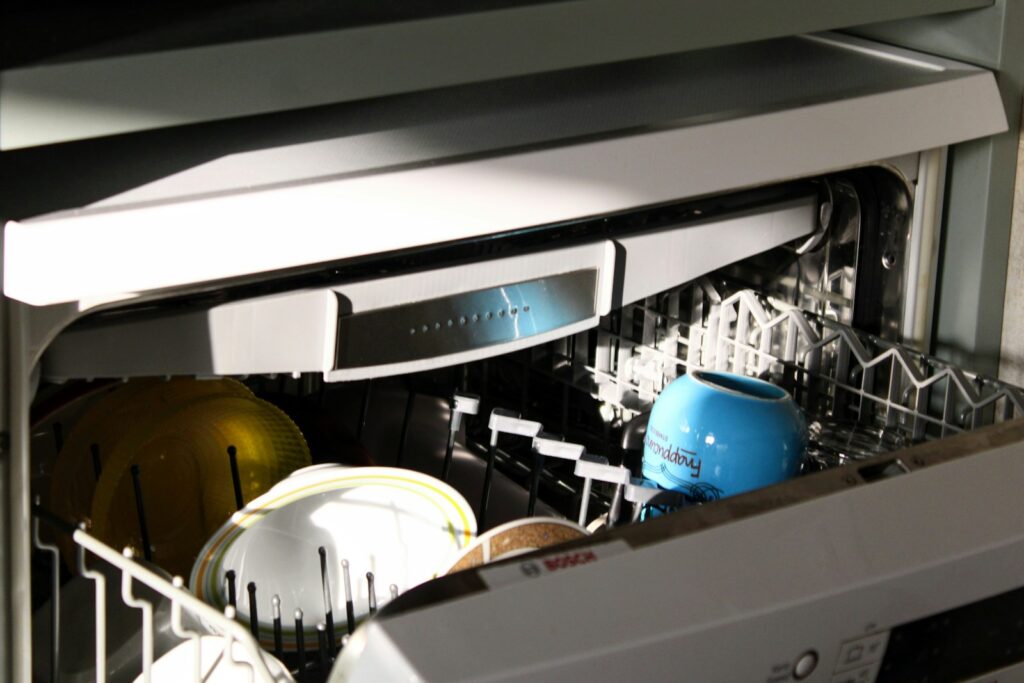
Modern dishwashers use sophisticated technology to maximize cleaning while minimizing resource consumption. Choose the eco mode whenever possible, which typically uses less water and lower temperatures while extending cycle time for energy efficiency. Skip the heated dry cycle and instead open the door slightly after the final rinse to allow dishes to air dry naturally. Regularly clean your dishwasher’s filter and spray arms to maintain optimal performance—clogged filters force the machine to use more water to achieve the same cleaning results.
Consider running your dishwasher at night during off-peak energy hours, which reduces strain on the power grid and sometimes costs less depending on your utility company’s rate structure. Many newer models have soil sensors that adjust water usage based on how dirty your dishes are, making pre-rinsing counterproductive to efficiency.
Strategic Dishwashing Timing

When you wash dishes can significantly impact resource efficiency. For hand washing, soaking dishes immediately after use prevents food from drying and becoming stubbornly attached, requiring less scrubbing and soap later. For dishwashers, waiting until you have a full load maximizes efficiency, but don’t wait so long that food becomes cemented on.
If you cook multiple meals in a day, consider reusing certain cooking implements without washing them in between—for example, the spatula used to stir vegetables can often be used again for the pasta sauce without washing. When entertaining, consider setting up a labeled bin where guests can place used glasses they plan to use again, reducing unnecessary washing. This timing awareness connects to mindful consumption patterns that extend beyond just the act of washing dishes.
Capturing and Reusing Gray Water
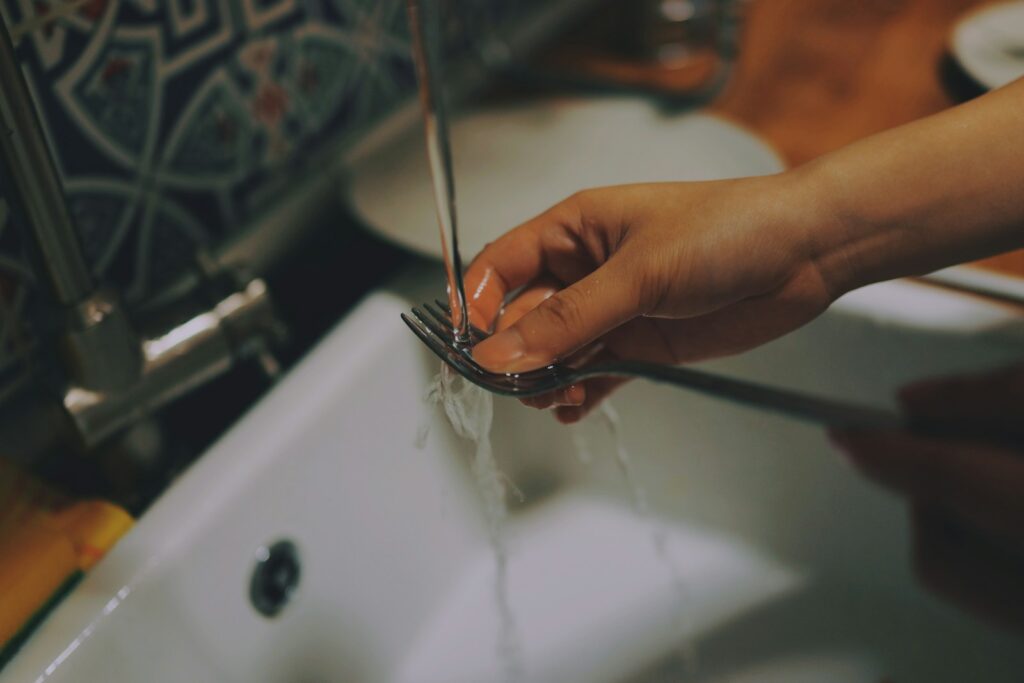
The water used for rinsing dishes—known as gray water—can be repurposed for other household needs instead of flowing down the drain. Place a basin under your dish rack to collect rinse water, which can then water houseplants or garden areas (provided you use plant-friendly, biodegradable soap). During summer months, collect dishwashing water in large buckets to use for outdoor plants, potentially saving hundreds of gallons monthly.
For those hand-washing dishes, the final rinse water from a load of dishes can be used as the initial soak water for the next batch of dirty dishes. When collecting dishwater for reuse, ensure it doesn’t contain excessive food particles or grease that might harm plants or create unpleasant odors in your collection containers.
Choosing Eco-Friendly Commercial Products

When DIY solutions aren’t practical, numerous environmentally responsible commercial dishwashing products are available. Look for products with certification from organizations like the EPA’s Safer Choice program, EcoLogo, or Green Seal, which verify environmental claims. Select concentrated formulas that use less packaging and shipping resources per wash. Powdered detergents generally have a lower environmental impact than liquid varieties due to reduced packaging and transportation weight.
Brands like Seventh Generation, Ecover, and Biokleen offer effective products without phosphates, chlorine, or artificial fragrances. Consider solid dish soap bars which eliminate plastic packaging entirely and typically last two to three times longer than liquid soap because they’re not inadvertently overused.
Upgrading to Water-Smart Appliances

When it’s time to replace your dishwasher, investing in a water-efficient model can dramatically reduce your environmental impact. ENERGY STAR certified dishwashers use less than 3.5 gallons per cycle compared to older models that may use 10-15 gallons. Look for dishwashers with multiple wash zones, allowing you to run a half-load using only the top or bottom rack when necessary. Some advanced models incorporate innovative water recycling systems that filter and reuse water from the final rinse cycle for the pre-rinse of the next load.
Soil-sensing technology adjusts water usage based on how dirty your dishes actually are rather than using a predetermined amount. While these appliances may cost more initially, the EPA estimates they save an average of 3,870 gallons of water over their lifetime, plus reduced energy costs from heating less water.
Building Sustainable Dishwashing Habits

Perhaps the most important aspect of eco-friendly dishwashing is developing consistent habits that prioritize conservation. Start by being conscious of which items truly need washing after each use—a water glass used only for water can often be reused several times before washing. When cooking, use a “clean as you go” approach to prevent dried-on food that requires more intensive washing later. Consider designating specific days for activities that generate many dishes, like batch cooking, to consolidate dishwasher use.
Educate everyone in your household about proper dishwashing procedures, perhaps using visual reminders near the sink until new habits form. Remember that small changes consistently applied have significant cumulative impact—saving just one gallon of water per day results in 365 gallons saved annually, along with the energy that would have been used to heat that water.
Measuring Your Progress
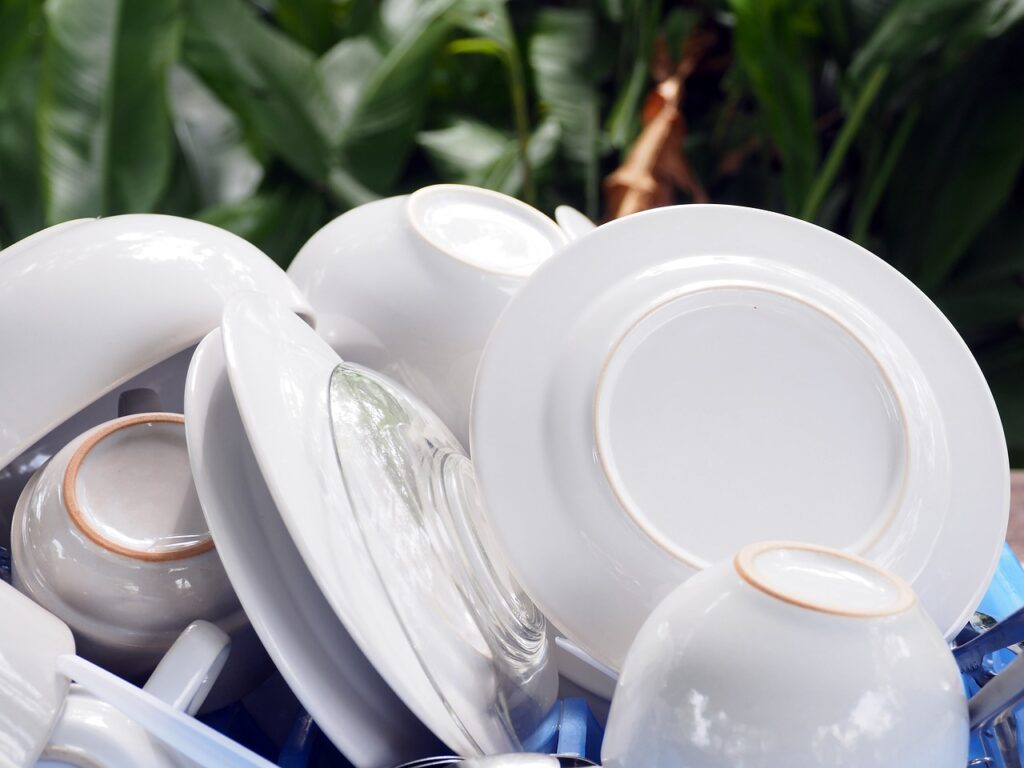
Tracking the impact of your greener dishwashing practices provides motivation and helps identify areas for further improvement. Monitor your water bills before and after implementing new techniques to quantify gallons saved. For more immediate feedback, place a gallon jug under your faucet and time how long it takes to fill—this gives you your flow rate and helps visualize water usage during dishwashing. Track how long a bottle of dish soap lasts after implementing concentrated application methods.
Some water utilities offer free water usage monitors that attach to faucets, providing real-time feedback on consumption. Consider creating a simple chart for household members to mark when they use water-saving techniques, making conservation a visible family priority and creating a sense of shared accomplishment as your resource efficiency improves.
Conclusion: Sustainable Dishwashing Tips
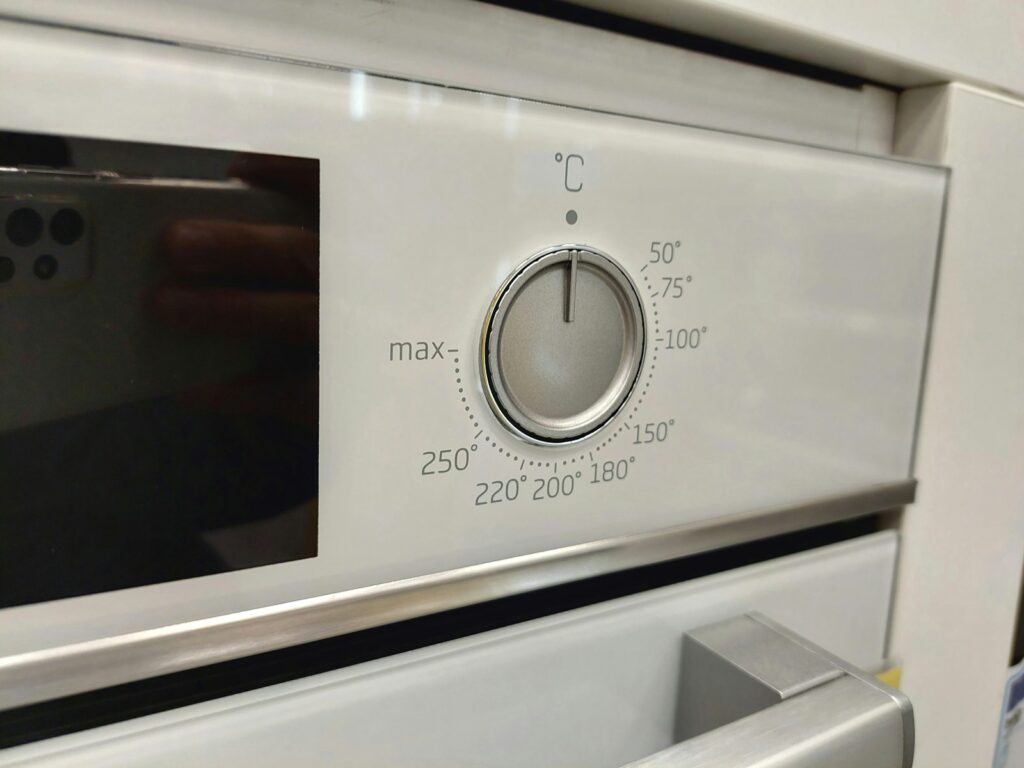
By implementing these environmentally conscious dishwashing strategies, you can significantly reduce both water and detergent usage while still maintaining clean, sanitary dishes. These approaches not only benefit the planet by conserving precious freshwater resources and reducing chemical pollution, but they also translate to tangible savings on your utility bills and household expenses. The beauty of greener dishwashing lies in its accessibility—these methods require minimal investment while yielding immediate environmental benefits.
Whether you’re washing by hand or using a dishwasher, each mindful choice compounds over time into substantial positive impact. Remember that sustainable living isn’t about perfection but progress—even adopting just two or three of these practices can make a meaningful difference in your household’s environmental footprint.
